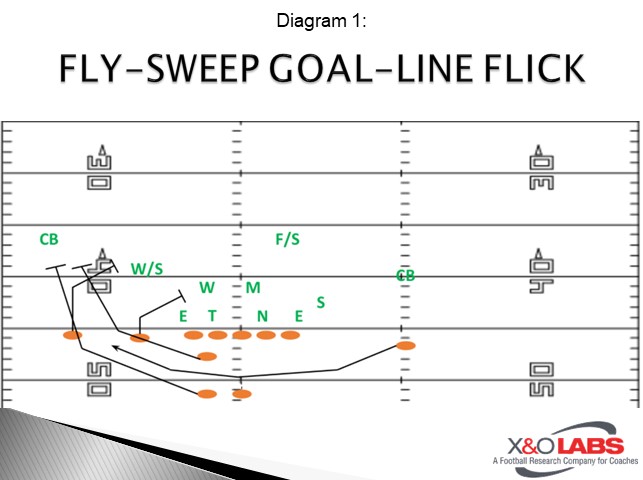By Sam Nichols
Managing Editor - X&O Labs
QB Coach - West Ottawa HS (MI)
Twitter: @SNicholsXOLabs
Introduction
Few things define a play caller’s success more then how they call plays in crunch time. The best coaches know exactly what they want to do when they are in critical moments. This year at the AFCA Convention in Charlotte, I set out to ask some of our best contributors/coaches how they would address a specific scenario.
So here was the question:
One play to win from the 5 yard line. What do you run?
Below are 10 answers to that question that trick plays, passing concepts, isolation routes, and runs. As you read these responses, consider what your team did or does in these scenarios and then contact me at [email protected] to submit your own response for a follow up report.
Jordan Neal, Offensive Coordinator, Hendrix College, Twitter: @CoachJordanNeal
Concept: We like fly sweep goal line flick when it comes to crunch time. It is a hitting play that is simple to execute and only relies on a few key blocks to execute. Since it is an unusual formation, defenses tend to struggle lining up against it as well. This is a high percentage of success for us and keeps the ball safe from the potential of a turnover.

Coaching Points:
- “Dead” twins formation into the boundary.
- You can go ahead and line up in this formation and run it straight up, or you can “burst” motion/shift into the formation to add another alignment issue/challenge for the defense.
- Dead twins receivers crack the 2 most dangerous 2nd level players and leave the CB unblocked for the RB and/or TE to arc to.
- RB and TE (if you choose to use the TE on the front side of the formation) arc block to take care of the corner-back and any trash that may leak through from the LB level.
- OL reach blocks (stretch) to the play-side and set an edge for the ball-carrier.
- Fly motion guy receives the “flick” from the QB. Run with the ball in the outside arm and race to the front pylon. Don’t be denied! Punch the ball into the end-zone!
- QB sends the motion man and snaps the ball at the latest possible moment to “flick” the ball to the receiver in fly motion.
To study film of this concept, click on the video below:









